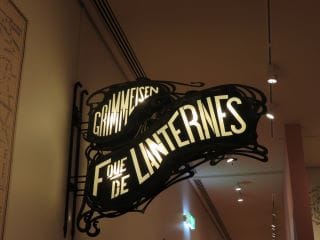More from “Paris: Impressions of Life - 1860 to 1925”
In yesterday’s post we saw a number of wonderful paintings that captured the epitome of social life in Paris in the late 19th and early 20th centuries. These paintings were part of an exhibition at the Bendigo Art Gallery, which was visited by John “Rowdy” Wylie and his partner Suzanne.
The exhibition came to Bendigo directly from the Musee Carnavalet in Paris. It is one of the oldest museums in Paris, and is dedicated to documenting the history of Paris life. Rowdy included the description of the exhibition which was posted on the wall as you walk in to the exhibition.
In addition, in the following short video we hear from a curator from the Carnavalet. She explains that "this exhibition reflects on an effervescent period of great social change, urban development and artistic innovation which shaped modern Paris and continues to capture the global imagination”. 1
With thanks to the Musee Carnavalet
The paintings Rowdy chose to show us exactly capture the myriad of entertainments that were available during those years, particularly around time of the Universal Exhibition of 1899, for which the Eiffel Tower was specifically built. From theatre to cabarets, night time parties and revels, and day time boating on the Seine, garden picnics and promenades, it was all about joining in – and dressing up to impress, to see and be seen!
I also had the opportunity to see this exhibition and I would like to show you some examples of other items on display which, together with the paintings, gave such a wonderful insight into French life between 1860 and 1925 – intricate women’s fashions and the hand made posters advertising all that was on offer!
I found it fascinating to examine the detail of the dresses and accessories on show – the beading and pearls and lace. The growth of sewing machines from the 1850s onwards had changed the face of fashion forever, but there was still a lot of hand-done work involved!
Whilst some of my photos are not great, I hope this slideshow gives you an idea of the beautiful fashions of the times:
Julie's slideshow
If you are interested, you can read more about the evolution of fashion from the 1860s onwards here.
Of course these were the days before television, the internet and social media, and the printing of newspapers and magazines was a time-consuming and expensive process. The best way to reach the masses easily and relatively quickly was by using posters, and hundreds of artists were employed to promote everything from household goods to cabarets, theatre, circuses and other events!
Contemporaries of Henri Toulouse Lautrec, such as Jules Cheret, Jean Pal, Jules Grun, Auguste Roedel, Alfred Choubrac and many more brightened up dull city streets and train stations with their use of bright colours such as oranges, reds and yellows in this alluring art form.
It was a great way for struggling artists to earn some money, and even well known names such as Toulouse Lautrec2 earnt a good income this way, despite his fame and wealthy patrons.
I hope you like this montage of some of the posters that were on display at the French Life exhibition:
Julie's slideshow
If you are interested, you can read more about the development and use of French vintage posters here.
We hope you have enjoyed seeing some details of Paris: Impressions of French Life 1860 to 1925 in Bendigo through the eyes of both Rowdy and Julie!



Footnotes
-
With thanks to The Musee Carnavalet, Paris, https://www.carnavalet.paris.fr/en/exhibitions/paris-impressions-life-1880-1925
-
We have written about Henri Toulouse Lautrec previously. You can read about him here and here.
